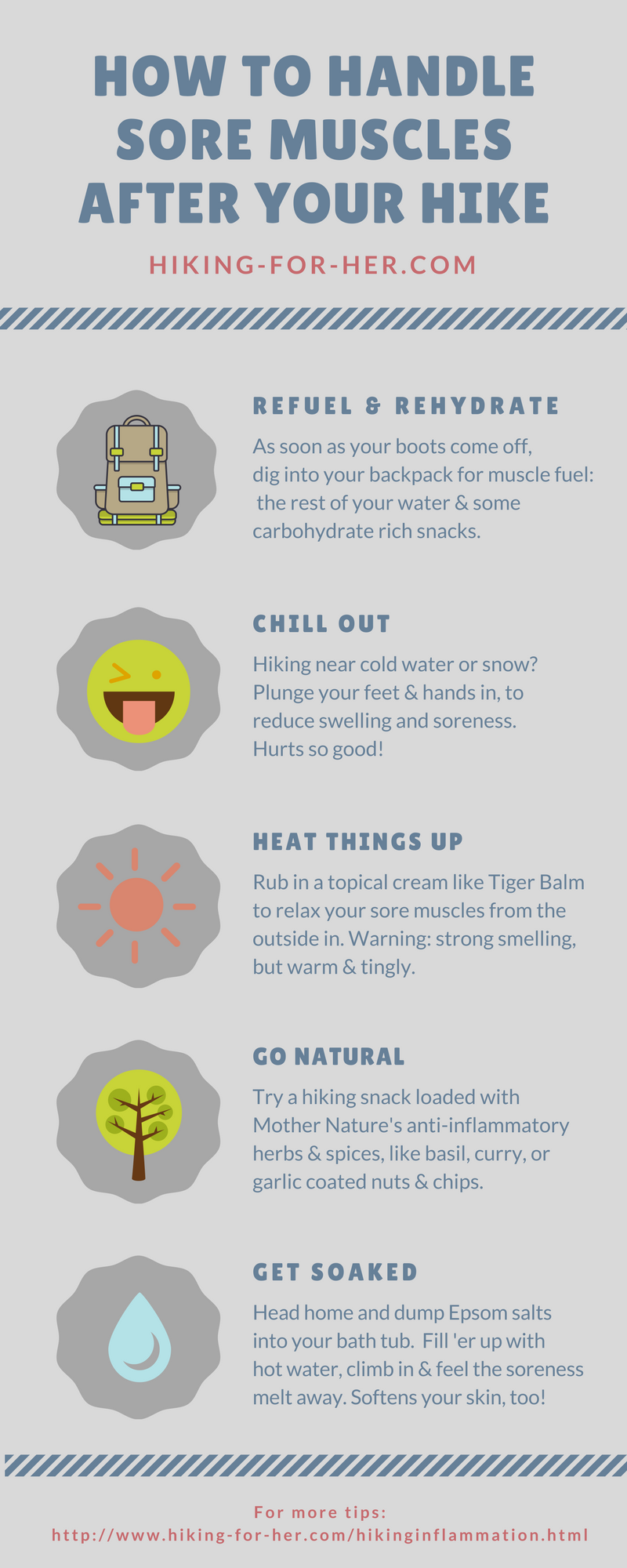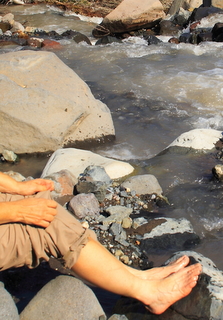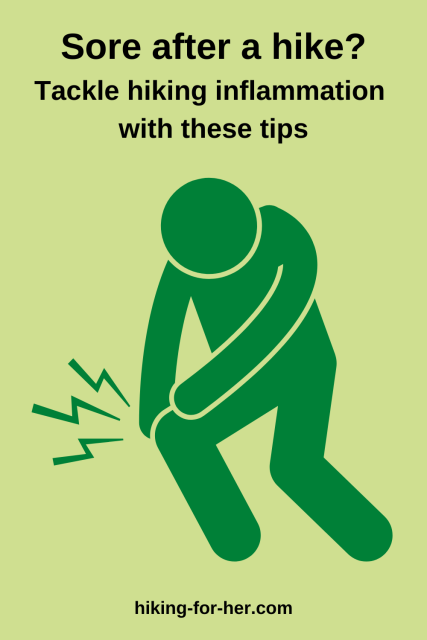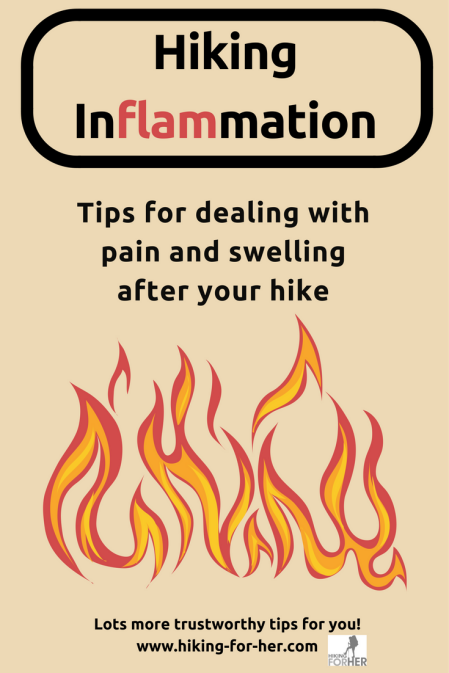
Hiking Inflammation:
How To Handle Soreness
After A Hike
By Diane Spicer
Hiking inflammation: the name paints an accurate picture of red, hot, painful flames.
And that's what your knee or feet or neck can feel like after a hike!
FACT: Hikers use all of their muscles.
FACT: Working muscles can become inflamed.
FACT: Trail injuries are often accompanied by inflammation.
So let's get familiar with hiking inflammation:
Or skip down to these inflammation tips.
Hiking inflammation defined
Let's define our terms more carefully.
"Inflammation" in a hiker's body implies that at least 2 of the "cardinal signs" of inflammation are present:
- heat and redness, if not soreness, swelling or loss of function.
Those cardinal signs give you a strong clue that you've overdone it.
But why do these signs pop up?
Why hiking inflammation
occurs in your body
Why does hiking inflammation happen?
Because your body is programmed to respond to insults and injury with a "stereotypical" response for protection and healing.
Here's the general story:
- Inflammation begins with the blood vessels beneath that particular patch of skin. They change in response to a signal: for hikers, that would be extra hard work in muscles or an injury like a sprained ankle.
- These vessels get larger diameters, bringing in a lot more blood to the area.
- When more blood shows up, the area is darkened, and because blood carries the warmth of your body's core, it's also warmer to the touch (Note: this is not "fever", because it's localized to the inflamed area).
- Although you can't see this directly, the vessels get "leaky", too, allowing blood cells and fluid to move into tissue spaces. The leakiness becomes apparent as swelling, another cardinal sign.
- The swelling (edema) can jangle nearby nerve endings, causing pain messages to shoot up to your brain.
- White
blood cells, your body's warriors, patrol the area and defeat any
invaders from open cuts or wounds. If they collect in large amounts, you notice pus.
- These warriors also signal for other cells to come in and help clean up debris or dead tissue.
This acute inflammatory process takes several days to complete its work.
It all happens for good reasons -
really!
Pain and swelling are protective, forcing you to get off the swollen ankle or stop using the leg when your hamstrings are pulled.
This hiking inflammation buys your body some much needed time:
- to sort out
the problem on a cellular level,
- to begin the process of healing,
- to restore normal structure and function (if possible - it depends upon the initial signal, and how you respond to it).
The perils of powering through
Ignore these obvious signals, and you're setting yourself up for chronic inflammation - much harder to deal with, and potentially able to sideline you for an entire hiking season!
Don't be the hobbling hiker powering through.
- Your stubbornness resets the clock, forcing your body into cycles of healing.
- Scar tissue and loss of function will result: less mobility, restricted function, no hiking fun!
This is a hard reality for thruhikers to accept, but think long term. You want to hike again next season, right?
Personal example of
hiking inflammation
I have an example of unwelcome hiking inflammation myself, which serves to illustrate how treatment can be very effective if applied aggressively and early.
After a 14 mile, 3500 feet of elevation gain hike in the Cascades (Washington State), I noticed that my left heel felt really sore.
I took off my high topped heavy soled leather hiking boot (required when tackling rugged & rocky terrain) and peeled off my double layer of socks.
I was alarmed to see my red, swollen, hot, and PAINFUL heel. It didn't want to bear my weight for even one more step when the protective, supportive boot was off.
- Yup, every blasted cardinal sign was there.
Being familiar with hiking inflammation, I hobbled over to an icy stream near the trail head (lucky woman!!) and plunged my entire lower leg into the numbing water.
I kept at it, withdrawing and plunging into the water, until about 20 minutes had gone by.
I swallowed an anti-inflammatory pill I had in my first aid kit, and drank a huge amount of water.
Luckily, I wasn't the designated driver that day, so I elevated my foot during the long drive home.
NOTE: This is an extreme case of hiking inflammation.
- Somehow I had injured my Achilles tendon, and the rubbing of the boot against it during my long, strenuous hike didn't help matters.
I probably felt some twinges during the hike, but was too dialed in on the spectacular scenery to notice.
- If I had, I would have stopped and iced down the area in a handy snow patch.
- I would have taken an anti-inflammatory and lots of water much sooner.
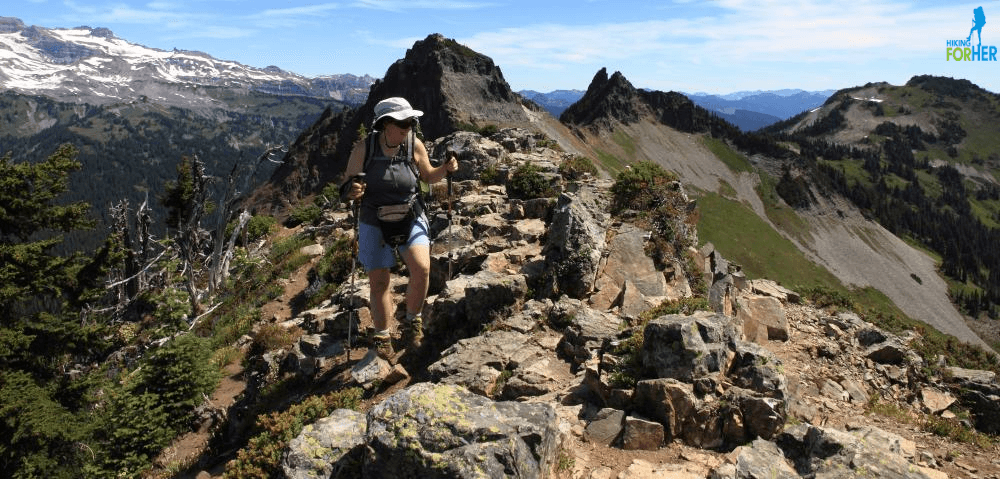
Long story short
It took me over 6 months to completely resolve the injury.
But the good news in this tale of woe?
I was able to completely reverse the inflammation!
And now I'm much more faithful about checking in with my feet and legs during a tough hike.
No more hiking inflammation for me, thanks anyway!
Or you, either! Keep reading.
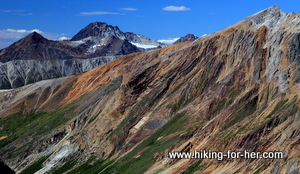 You can't hike into the back country if you're fighting inflammation.
You can't hike into the back country if you're fighting inflammation.
Inflammation: good or bad?
So is inflammation a bad thing?
Or is it helpful?
The answer depends upon your point of view.
HELPFUL: If you realize that inflammation is a non-specific, protective mechanism built into your body to deal with trouble, you'll be thankful for it.
- Not exactly happy about it, but willing to work with it.
BAD NEWS: If you're a week-end warrior or long distance hiker hell bent on finishing your hike, then you'll be annoyed and angry when you start to hurt.
- "Why is my body doing this to me??", you might wail.
Indeed, that is the question.
During your hike
Short answer: your body seeks homeostasis, the normal "status quo", 24/7.
For example: It works hard to keep your internal temperature constant, even when your external environment undergoes temperature swings.
Specific hiking example:
- You start hiking at daybreak under cloudy skies: 58F.
- By noon, the sun is out and it's 85F.
- Yet your core temperature never varies from around 98.6F.
That's the power of homeostasis! ("keeping it the same")
Another example
During a hike, your blood vessels are constantly dilating and constricting, routing blood where it's needed: to your thigh and back muscles, and away from your stomach.
- Unless you gulp down huge amounts of heavy food while hiking - not recommended because it diverts blood flow from your skeletal muscles.
- Unless you enjoy an upset stomach, cramps, and feeling energy drained.
So it's a given that your body is trying to do the right thing by going through its inflammatory cycle when you are exercising beyond your normal routine, or are injured.
After your hike
And once you're off the trail?
Your body has important work to do to get your ready for your next hike:
- rebuild the micro-tears in the muscles
- clean up any debris in the joint spaces,
- fight any areas of infection (cuts, scrapes, thorn punctures, dirt in your torn cuticles)
- remove waste products from your muscles (lactic acid that leads to soreness comes to mind)
A tough job!
These activities can give you pain sensations and mild swelling in your extremities, but probably not all of the other cardinal signs of inflammation.
- It's a low level inflammation which rest and fluids and good nutrition will take care of - if you're mindful about them.
- See below if you tend to swell up on a hike.
So if you're feeling mildly sore and tight after a hike, that's good news!
You gave your muscles and joints a nice work out.
- Deal with post hike recovery using these self care tips.
- Handle your sore calves with these soreness tips.
Even better news:
The more you hike, the less sore you will feel the next day. Your body becomes efficient and conditioned.
And you're smart enough to help it out with plenty of water and lean protein, fresh fruit and veggies, stretching, daily walks, and plenty of restful sleep.
Swollen feet, ankles & fingers
during or after a hike?
Here's what to do
It's likely that this is a normal event, caused by the pull of gravity on the fluid in your tissue spaces.
- Your hands hang down at your sides, your feet and ankles are the lowest point on your body.
- So fluid pools in these areas, leading to swollen digits and ankles.
Another possible factor: vasodilation.
- That means your blood vessels get bigger to handle the increased blood flow as you're striding along the trail.
- This can force watery fluid (not blood) out into tissue spaces, where it takes a while to return back to the bloodstream.
Use these tips and tricks for dealing with swollen fingers after a hike.
And these tips for dealing with swollen feet and ankles after hiking.
Sore feet can be managed with these soreness tips.
NOTE: This swelling should be painless, to differentiate it from inflammation due to injury, infection, allergic reactions, blood clots, hyponatremia or other underlying issues.
If the post-hike swelling hurts,or it doesn't resolve after a few hours (especially after using those tips linked to above), get to a health care provider ASAP.
Anti-inflammatory suggestions
for sore muscles after a hike
Suggestion #1:
Be proactive
Why wait for "the morning after" effect?
Once you're back at the trail head, and your boots are off, do some pre-emptive stretches.
Nothing elaborate, just try this:
- Grab the top of your hatch back, or the roof of your car, with your left hand for balance.
- Put your other hand around your right ankle as you bend your right knee, bringing your foot as close to your buttocks as possible.
- Hold that position for the count of 10.
Ahhh! Your muscles on the front of your thigh say thank-you-very-much. And of course, you'll do the other side, too.
- Don't forget the muscles on the back of the thigh!
Here's another easy post-hike stretch:
- Find a slightly elevated rock or patch of ground.
- Put your left heel on it, point your toes toward your knee and lean in a bit until you feel a stretch in your thigh muscles.
- Hold for the count of 10, and then switch sides.
You probably think "This is too simple", but please believe me when I say that simple beats complex every time for prevention of hiking inflammation. All it takes is a little discipline.
Now you can get into the car, or onto your bike, and your muscles won't cramp up to the degree they would have without the stretching.
This buys you some cellular peace, too:
- it lengthens the muscles fibers,
- re-sets the muscle spindles,
- and generally tells the muscle cells that the hard work is over but the repair cycle should begin.
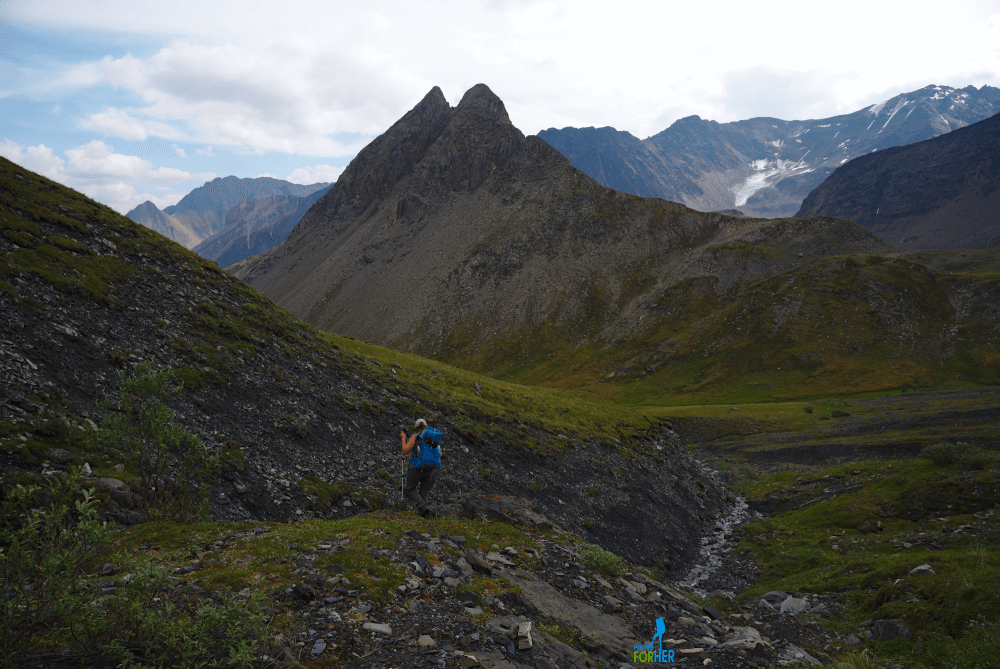
Suggestion #2:
Cool down fast
You'll have to think ahead for this tip.
Throw a cooler of ice and water bottles in the back of the car, and enjoy the cold water as a refreshing part of the cool down routine after a long summer hike.
Use the cooler as a foot bath to head off hiking inflammation!
If that sounds too unsanitary or takes too much work, and there's a convenient snow patch or rushing stream handy, use that instead.
The point is to let Mother Nature help you out here by reducing swelling and reversing congestion.
More icy tips below...
Suggestion #3:
Eat, drink and be chill (or hot)
As soon as you take off your boots, ingest some water and a carbohydrate rich snack.
Along with these nutrients, which are replenishing your depleted stores, swallow an over-the-counter anti-inflammatory.
NOTE: This is not medical advice. If you have pre-existing conditions & take medications that would interact negatively with anti-inflammatories, of course you wouldn't do this.
But if you're a healthy person with no adverse reactions to these products, they can head off hiking inflammation's soreness and stiffness induced by a long hike.
- They interrupt a biochemical pathway involved in the cardinal signs of inflammation.
Not a fan of over the counter medication?
Anti inflammatory topical applications are also useful.
My favorites are Tiger Balm and Mineral Ice: fire and ice!
Tiger Balm is sold with a tiger on the lid in case you didn't get the "tiger" part.
It is applied to unbroken skin, and creates a sensation of soothing heat. The ingredients include topical analgesics (pain relief).
- Fight fire with fire is true here.
I use the "ultra strength" variety, but there are various formulations to try.
Fair warning: There is a distinct odor to Tiger Balm, a menthol/camphor smell, but it's not unpleasant. Not suitable for bear country!
On the up side: it hasn't stained my clothing or towels.
The opposite approach works, too
Try the opposite approach: get things cooled down fast with Mineral Ice.
This blue menthol gel is rubbed into unbroken skin and produces an instant numbing sensation (topical analgesic) to tackle the soreness in your muscles.
I've used this when giving sports massage (including on my own limbs), with good results.
Be aware that it will diminish sensation in the application area, so don't try to do anything strenuous right after you apply it, or you could injure yourself.
Caution!
With either of these products, WASH YOUR HANDS before touching your eyes, mouth or food, or you'll be sorry!
- You'll have inflamed mucous membranes to go along
with the rest of your hiking inflammation :(
By relieving the muscle soreness in this way, you are helping flush the muscles of lactic acid and other compounds produced during exercise.
That's going to reduce the healing time between hikes, especially if coupled with proper hydration and good nutrients.
One more suggestion for
hiking inflammation
Here's one more trusted source of relief from soreness:
Topricin in a small tube so you can carry it in your backpack.
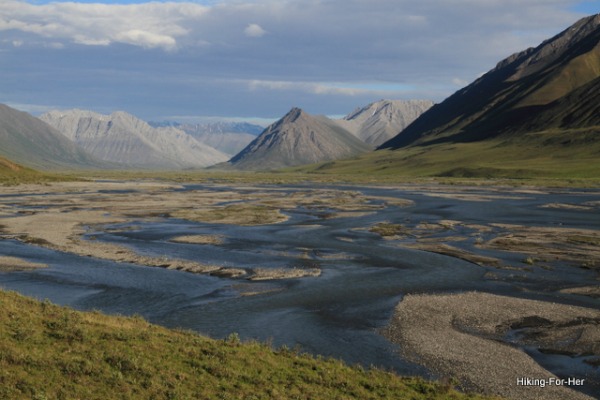
Suggestion #4:
Get soaked
Enjoy a nice long soak in a hot bathtub saturated with Epsom salts (magnesium sulfate).
- NO bubble baths, just these salts.
This is the cheapest way to buy relief from muscle pain and stiffness that you can imagine.
And it really does wonders for sore hiking muscles, if you give it a bit of time.
- If you're not a "bath" type of person, soak a soft cloth in Epsom-saturated warm water and apply it to your sore areas.
- Or stick your sore feet into a bucket of warm Epsom saturated water.
This works for reversing hiking inflammation, trust me! You will feel SO much better after this old fashioned, low tech, cheap combination of minerals and hydrotherapy.
Suggestion #5:
Use Mother Nature herself
Hiking inflammation can be combated by ingesting anti- inflammatory herbs in a wide variety of formulas.
I'm going to throw you on the mercy of your local health food store or herbalist here.
Ask them for a list of herbs known to combat (hiking) inflammation.
And in case you're not into natural remedies, where do you think aspirin, a famous anti-inflammatory, came from?
- Willow tree bark!
- It doesn't get any more natural than that!
Personal experience: I've used capsules of turmeric and bromelain to help my body recover from pulled muscles and the soreness that accompanies a long backpacking trip.
Habits to combat
hiking inflammation
To recap: Hiking inflammation is no joke.
It can build up over time and create nagging chronic injuries in soft tissue. Those take a long time and lots of patience to heal.
But most hikers can expect to be a bit sore and stiff after a vigorous hike.
If you're a young twenty-something of a hiker, you can probably get away with pushing through the pain and stiffness - for awhile.
But if you're a bit older (and wiser?), it's time to pay attention to stiff, sore muscles and joints before their whispers turn into roars.
Make these hiking habits
a regular part of your trail routine
- Before your hike, drink water and eat a sensible breakfast.
- If you're a caffeine addict, realize that for every cup of coffee or black tea you consume, you lose more than that in water via urination. Maybe switch to less caffeine in green tea?
- During the hike, drink water and snack frequently.
- Take off your boots and socks at least once during a long hike, to allow circulation to normalize and avoid swollen ankles.
- Raise your hands over your head once in a while, to prevent fluid build up in your fingers.
- Loosen your pack straps, wear looser clothing, leave your tight jewelry at home.
- Take advantage of hydrotherapy opportunities provided by Mother Nature: snow fields, rushing streams, cool mud.
- Pay attention to hot spots on your feet and deal with them immediately, because blisters suck. And the inflammation they cause can set you up for a blood-borne infection. Even suckier.
- Stretch any cramped or complaining muscles.
- Take more frequent rest breaks.
- Breathe from your belly, not your upper chest!! Oxygen is required for hard working muscles.
- And consider an anti-inflammatory regime post-hike, using the suggestions given on this page.
Repeat after me:
Prevention of hiking inflammation is worth way more than a pound of cure!
Here's one final way to chase away soreness: incorporate antioxidants into your hiking routine.
Save these tips for later on your Pinterest boards!
Home page > Best Hiking Tips >
Best Hiking Inflammation Tips
|
I get emails all the time about what I wear, eat, carry and love to use on the trail. That's
why I provide affiliate links to you: the best gear that I use myself and have seen used by other hikers is instantly
available for your consideration, and the gear company sends a few
pennies per dollar to this reader-supported hiking website. There is no added cost to you! Everyone ends up a winner: Great gear for you, strong gear companies, and more free hiking tips for everyone. Thanks very much for your support. It's warmly and sincerely appreciated. It also helps send these hiking tips to all your virtual trail buddies around the globe. |
 |
